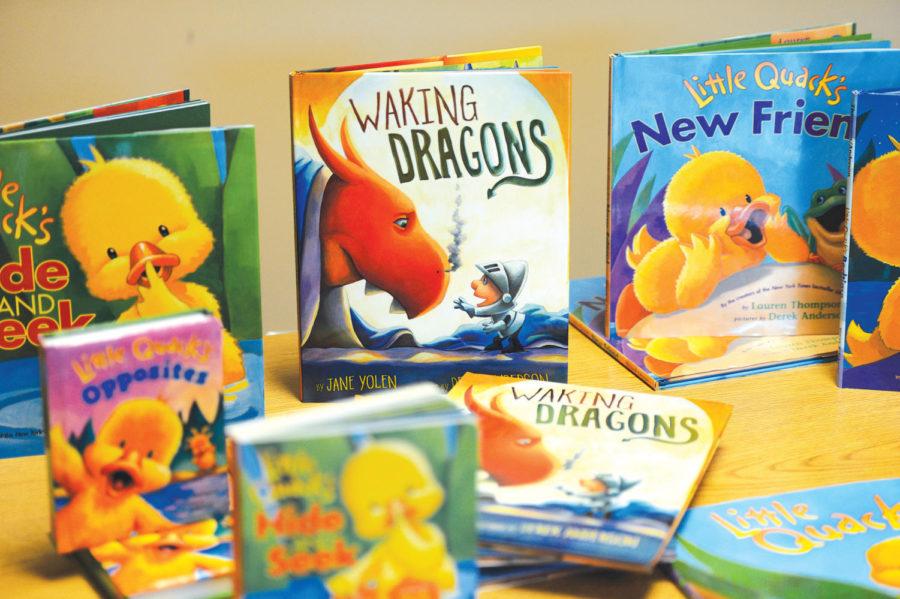Children’s illustrator, ISU alumnus shape children’s imagination
Photo: Huiling Wu/ Iowa State Daily
Books by Derek Anderson are presented outside of the classroom while Anderson gives a speech during a children’s literature class Thursday, Nov. 8, at LeBaron Hall. Anderson was an ISU student and is now a children’s book author and illustrator.
November 9, 2012
Children’s books act as shaping tools for a child and can make their future brighter and create moments for a lifetime.
Amy Popillion, senior lecturer of human development and family studies, teaches children’s literature at Iowa State. Popillion believes that “children’s literature is crucial. Picture books are one of the very first introductions children have into the world of reading.”
Popillion said that as a child, “books were my escape and the way I could experience new worlds and dream of a better life.” She has a passion for books and believes they are essential for a child.
Popillion also discovered the attitudes that students sometimes have when deciding to take her class, saying: “How hard can it be to read kids’ books?” She said she wants the students to recognize that it takes a lot of hard work and time to create just one picture book alone.
To enhance her students’ knowledge about creating the books, Popillion had Derek Anderson as a guest presenter.
Anderson is a graduate of Iowa State and a native of Ames. He is an author and illustrator of approximately 20 books read by children worldwide. Anderson discussed how it is rather difficult to get into this business.
“It’s about overcoming rejection and not giving up,” Anderson said. He also discussed an important skill that illustrators must adapt when illustrating for someone else.
“You have to be able to illustrate the author’s words,” Anderson said.
Anderson described reading books as an experience.
“When you are being read to by a parent, you learn more vocabulary and create moments that you can look back on,” Anderson said. “It’s a greater experience than if you are just sitting down watching cartoons.”
Anderson said what he likes most about creating children’s books is that he is able to reach kids from all walks of life and it is like he is part of the child’s world in an indirect way. He said he always puts everything he can into the books and that, “once it’s published, it’s not really mine anymore, but in return it creates a bond with the child.”
Anderson compared this to “when you have a favorite song and you consider it to be ‘your song’ and that’s why you love it, and you can have that experience with a book.”
Anderson enjoys the reactions he sees in the children who read books he writes or illustrates.
“A child and their parent will come up to you and then they tell their child ‘he’s the one who created Little Quack,'” he said. “But the child considers Little Quack to be real, and so I explain it to them as if I’m kind of like Little Quack’s daddy.”
Anderson often will put bits of his life into his books. He hid the campanile in one of the books he illustrated and also has a book he wrote and illustrated titled “Story County: Here We Come!”
“I hide things in my books; it’s my own way of giving back to the community,” he said.
Chuck Richards is another children’s book author at Iowa State. He discussed some skills and traits that one must adopt when creating books for a child.
“You must have an active imagination and an understanding of your audience, also, having the ability to tell a story through pictures.”
Richards, Anderson and Popillion all said that students who are striving to become illustrators or writers must be prepared, when they first begin, to handle a lot of rejection letters. They must also be persistent.
Derek Anderson’s first presentation will be at 10:30 a.m. Saturday, Nov. 10, at the University Book Store. The second will be at 2 p.m. the same day at the Ames Public Library. Both presentations are free and open to the public.

















